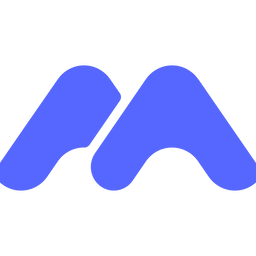5 Most Common Trend Indicators for Trend Trading
Technical indicators are one of the most popular tools traders and investors use in the stock markets. Learn about the top 5 indicators here.

A Common Struggle for Beginners
No matter what stock market chart you see on the internet, you would notice every single one has some lines on the screen. Some of them might also have straight lines drawn across the screen. But have you ever wondered what these mean?
These are known as trend lines and are the favourites for traders and investors.
Trend trading involves identifying and following the direction of a trend and taking trades in the same direction. The idea behind trend trading is that once a trend is established, it is more likely to continue than to reverse.
Trend traders use various technical trading indicators and charts to identify trends in asset prices. They look for patterns in price movements and use trend lines and moving averages to determine the direction of the trend. Once a trend is identified, trend traders will typically enter a position in the direction of the trend and hold it until the trend reverses.
Confusing? Don't worry. In this article, we will explore the top 5 technical indicators traders use to trade and how you can use this to identify trending stocks. But first,
What is a Trend?
Just like oversized T-shirts are a trend now, a trend in stock markets refers to the general direction of an asset’s price movement over time.
A bullish trend is characterised by rising prices, with each successive high being higher than the previous high. This suggests buyers are more aggressive than sellers, and demand is outstripping supply. For instance, if a company’s share price increases by Rs 10, falls by Rs 5, and rises again by Rs 20, the share price would be considered an uptrend.
Conversely, a bearish trend is characterised by falling prices, with each successive low being lower than the previous low. This suggests sellers are more aggressive than buyers, and supply is outstripping demand.
Ultimately, a sideways or range-bound trend occurs when prices move within a relatively narrow trading range, where neither buyers nor sellers can gain the upper hand.
Now, a trader identifies a trend and trades in the same direction in trend trading. If the trend is bullish, the trader will enter a long position, which means buying the asset and expecting the price to continue to rise. On the contrary, If the trend is bearish, the trader will enter a short position, which means selling the asset with the expectation that the price will continue to fall.
The Popular Trend Indicators to Use
Trading with trends involves identifying the right trends and employing different technical indicators to capitalise on them. Here are the top trend indicators you can use to trade in trending stocks:
1. Simple Moving Average (SMA) Crossover Strategy
A Simple Moving Average or Daily Moving Average helps you crunch past data into a single number to hide short-term volatility. This strategy allows you to get a signal from the noise. It gives equal weight to all units in a particular time range. If the range is set at 10 days, you will find the moving averages of 10-day blocks. After the moving averages are plotted on a graph, a line can be drawn to connect the dots. That line is known as the Simple Moving Average, which provides you with cues to make investment decisions.
2. Dual Moving Average (DMA) Crossover Strategy
The following rules characterise the Dual Moving Average strategy:
- Enter long and exit short
Open long positions and close open short positions when the 50-day Simple Moving Average crosses above the 200-day moving average.
- Enter short and exit long
Open a short position and close any open long positions when the 50-day moving average crosses below the 200-day moving average.
This strategy does not use stop losses. When prices move against a position, sooner or later, the two moving averages will cross again, and at that point, the strategy will close the position.
3. Moving Average Convergence Divergence (MACD) Strategy
The MACD, a popular momentum indicator, combines moving averages to show trends and momentum. It fluctuates above and below zero as moving averages change. Traders use crossovers and divergences for signals. It doesn't indicate overbought or oversold levels due to its unbounded nature.
Below is how to calculate MACD:
- MACD Line: (12-day EMA - 26-day EMA)
- Signal Line: 9-day EMA of MACD Line
- MACD Histogram: MACD Line - Signal Line
The values of 12, 26, and 9 are the default setting used with the MACD. However, other values can be set, depending on your trading style.
MACD generates signals via three methods:
- When the MACD line crosses above the signal line, it indicates a bullish movement; when it’s below, it indicates a bearish trend.
- MACD line crossing above the zero line indicates a bullish movement; when it’s below, it indicates a bearish trend.
- Divergence - disparities between MACD histogram and price chart, indicating potential trend reversals.
4. Rate of Change
The price rate of change (ROC) is a technical indicator that measures the percentage change in price over a specified period. It is a momentum-based indicator that measures the percentage change between the current price of a stock and its price a certain amount of time ago.
To calculate the ROC, you take the current price of an asset and divide it by the price from a specified number of periods ago, then subtract one and multiply by 100 to get the percentage change.
For example, if the current price of a stock is Rs. 500 and it was trading at Rs. 400 ten periods ago, the ROC would be (500/400 - 1) * 100 = 25%.
The ROC can help you identify whether an asset is overbought or oversold. If the ROC is above zero, it suggests that the asset is gaining momentum and could be a good buy opportunity. Conversely, if the ROC is below zero, it indicates that the asset is losing momentum and could be a good sell opportunity.
5. Donchian Channel
The Donchian channel is a channel-based technical indicator that is used to identify trends in the market. It is named after Richard Donchian, a prominent technical analyst, and It helps you identify potential breakouts and retracements in the market.
The Donchian channel consists of three lines: the upper channel line, the lower channel line, and the middle line, which is often the 20-day moving average. The upper channel line represents the highest high over a specified period, while the lower line represents the lowest low over the same period. The middle line represents the average of these values. When the price is above the upper channel line, it signifies an uptrend; when it is below the lower channel line, it means a downtrend. When the price is between the upper and lower channel lines, it is considered in a range-bound market.
You can use the Donchian channel to identify potential buy and sell signals. For example, if the price breaks above the upper channel line, it could be a signal to buy, while if it breaks below the lower channel line, it could be a signal to sell. Traders can also use the middle line as a level of support or resistance, with a break above or below this line indicating a potential trend reversal.
Advantages & Disadvantages of Trend Following
Following are some of the advantages of trend trading:
- Trend traders go long when the market is gaining good momentum, forming the essence of trend trading. Gaining from uptrends can help traders since some trends go on for years.
- Trend trading also lets you identify when the markets have turned bearish, enabling you to go short on time and benefit from the downward trend.
- The trend-following strategy is slow-paced, unlike day trading, where transactions occur quickly. Hence, you do not need to spend more on transaction costs.
However, the trend-following strategy also has certain disadvantages, which are listed below:
- Following a trend can be challenging sometimes, as traders are tempted to exit a trade as soon as they make a small profit.
- Using too many indicators simultaneously for long and short time frames can confuse you, and you might judge the trend differently.
Summary
- Traders use trend-following strategies to identify a trend and then take a position accordingly.
- Strategies can be created using either one indicator or a combination of the trend trading indicators.
- One must master the strategies before applying them. Don’t forget to use all resources to analyse trends - from research data to charts and more.
- One should also determine the markets in which to conduct your trades and your risk appetite.
Checkout more interesting blogs on our blog





